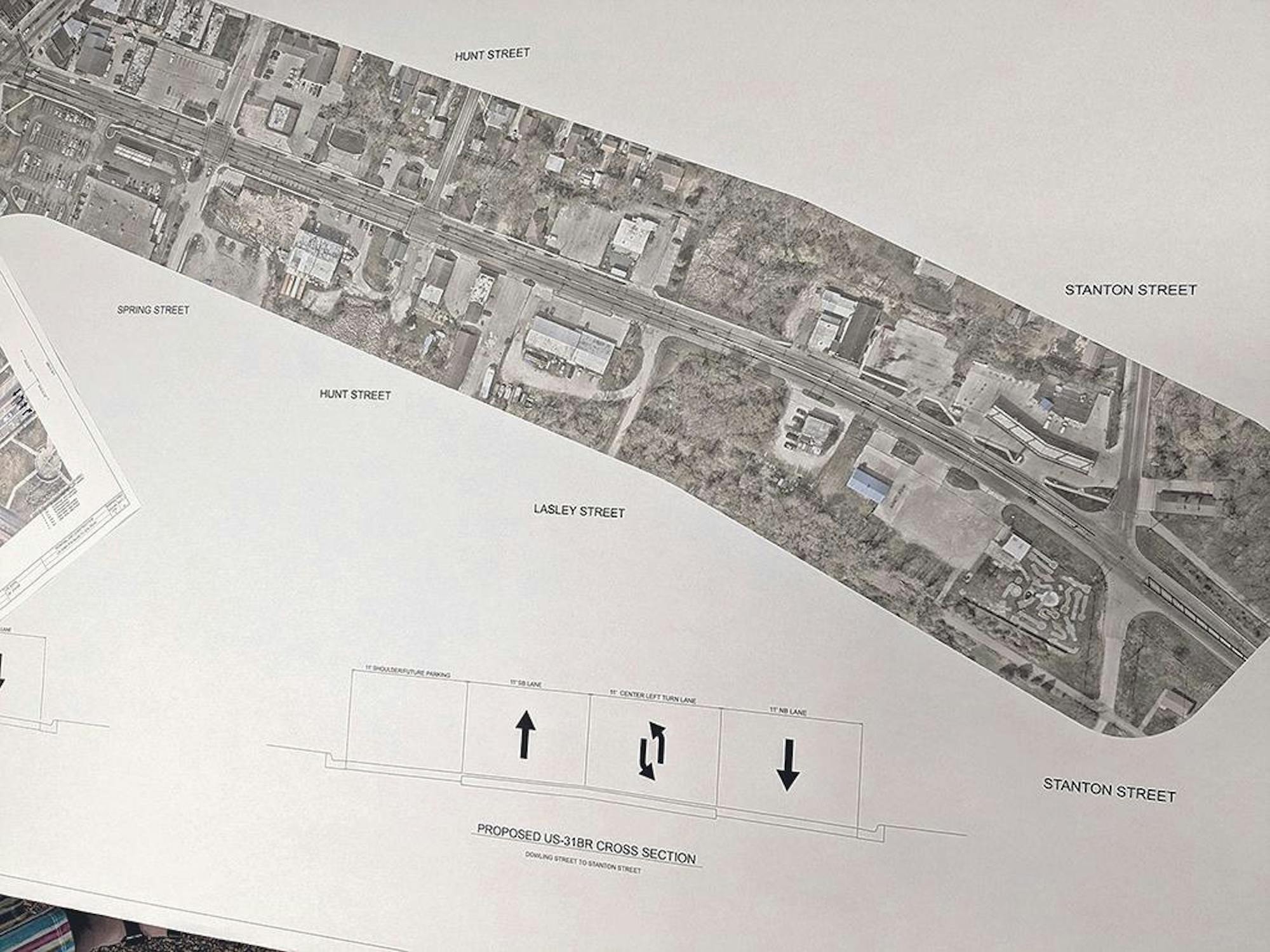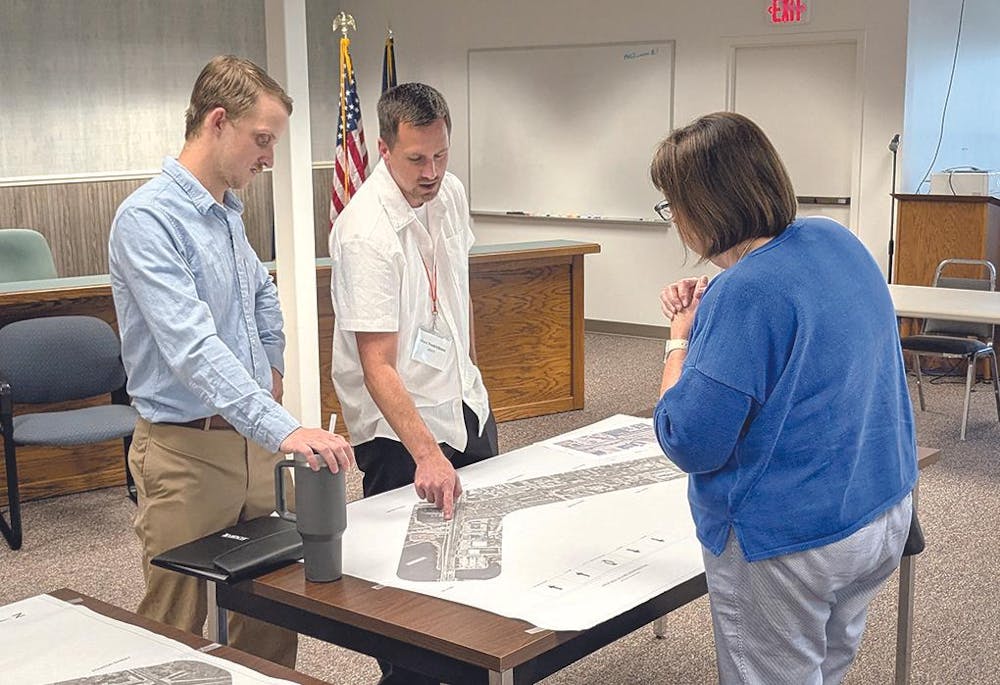MONTAGUE — The Michigan Department of Transportation hosted a public engagement session Thursday to present, and receive feedback on, a planned resurfacing of Water Street in Montague between the Dowling Street intersection and Stanton Boulevard.
While designs have not been finalized, the most notable portion of MDOT's plan is that the road, four lanes for many years, would be reduced to three lanes, with the northbound portion of the street going down to one lane. There would be a turn lane leading into the Dowling intersection, and the east sideof the street would become on-street parking.
Marc Frederickson, manager of the Muskegon Transportation Service Center (TSC) said feedback from the City of Montague informed the proposed plan. He added that the data MDOT has collected indicates the proposed alignment would not cause undue delays for drivers and would actually decrease crashes due to the lower potential for sideswipe collisions at the intersection.
"If you're pulling out of the driveway, you only have to wait for one lane here and one lane there to clear, rather than two lanes of traffic here and one there," Fredrickson said. "The turn lane is a refuge, potentially. You can get out of the active lane when you're trying to take a left turn...It benefits pedestrians who are trying to cross the road, with less lanes of active traffic they're crossing."
Fredricksonalso emphasized that the project is still in its planning stages and more feedback is welcome. Any feedback residents give to the city can be passed along to the department.
"It's not like if you missed it, you'll never get another chance to comment on the project," Fredrickson said. "This is the first meeting. There will be additional follow-up meetings. There will be an additional engagement piece."


The department isn't just looking at Water Street for its future work. The causeway between Whitehall and Montague, originally built in 1929, is at risk of future closure if funding is not secured to do a needed bridge replacement. MDOT used the causeway as one example of many bridges in the state that are at similar risk in a press release Aug. 21.
"At this rate, by decade's end, nearly 50% of state routes, which carry 53% of total traffic and 80% of commercial traffic, will be in poor condition," said MDOT Director Bradley Wieferich in the release. "Without additional investment, those projections will get worse."
According to region bridge engineer Mike Wilson in a video release by MDOT that accompanied the press release, the last significant rehab work done to the bridge was completed in 1986 and it is now "showing its wear and signs of deterioration."
It would cost $20-30 million to do the necessary bridge replacement. According to the release, such replacements can take on average two years to complete, but now have an anticipated service life of 80-100 years, as opposed to the 40-plus when the last work was completed.












